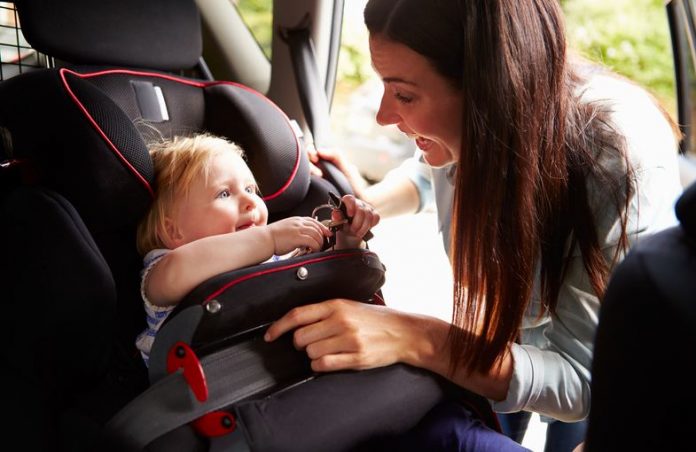Driving along with baby in the car is a regular part of a parent’s routine. With a busy schedule to maintain, no wonder many parents feel frustration at the task of buckling fasteners, adjusting belts and dealing with crying babies that are not happy about the fuss.
Frustration can lead to shortcuts. How serious are the risks?
Does Baby Have to Face Backward?
It can be very frustrating to a new parent to deal with the piercing wails of a hungry or tired infant who is facing backwards in the back seat of the car.
Sunlight may sneak into the baby’s face, he may have lost his pacifier or may just want to see you.
Unfortunately, keeping baby in a backwards facing car seat until at least 20 pounds and one year of age is crucial to their safety.
A baby’s neck muscles are not as strong as an older child’s. Bumps and turns in the road can easily strain a small neck when gravity takes control.
Seats that face backwards should be reclining at a 45 degree angle; this angle compensates for weak muscles and cannot be attained when the seat faces forwards (try it yourself).
Some seats are even equipped with a gauge on the side which will indicate the perfect angle for your baby’s comfort and safety.
If you feel your child has the required strength and is over 20 pounds before a year you can ask your pediatrician for advice on when to turn the seat around.
How Tight Should Straps Be?
To determine the correct placement and tightness of the harness you should just barely be able to fit one finger between baby and the harness straps.
Any looser and baby could be ejected from the straps in an accident. The harness straps should be adjusted to come out at, or just below, baby’s shoulders.
The chest clip needs to be across the baby’s chest bone. This keeps the harness straps in the proper position and will absorb the force of a collision across the chest bone, which is safest.
If the weather is cold you should avoid bundling baby too much before putting him in the baby seat since the extra bulk will affect your ability to fit the harness properly. It is better to harness baby and then cover him with blankets placed over the straps.
How Do I Know if the Seat is In Right?
Improperly attaching the car seat to your vehicle is a common, and very dangerous, mistake. In one study it was found that 63% of car seats were not properly installed. Read the instructions thoroughly.
Some children’s stores that sell car seats, as well as local police, can check your installation and show you how to make the corrections.
Often the seat is simply too loose. Try installing it by placing your knee in the seat while fastening it in. The seat should not move at the base.
Keeping your kids safe is a huge concern for parents. Understanding the necessity of safely buckling your kids up right from infancy will ensure that you, and them, become accustomed to the routine and implement it on EVERY trip.

